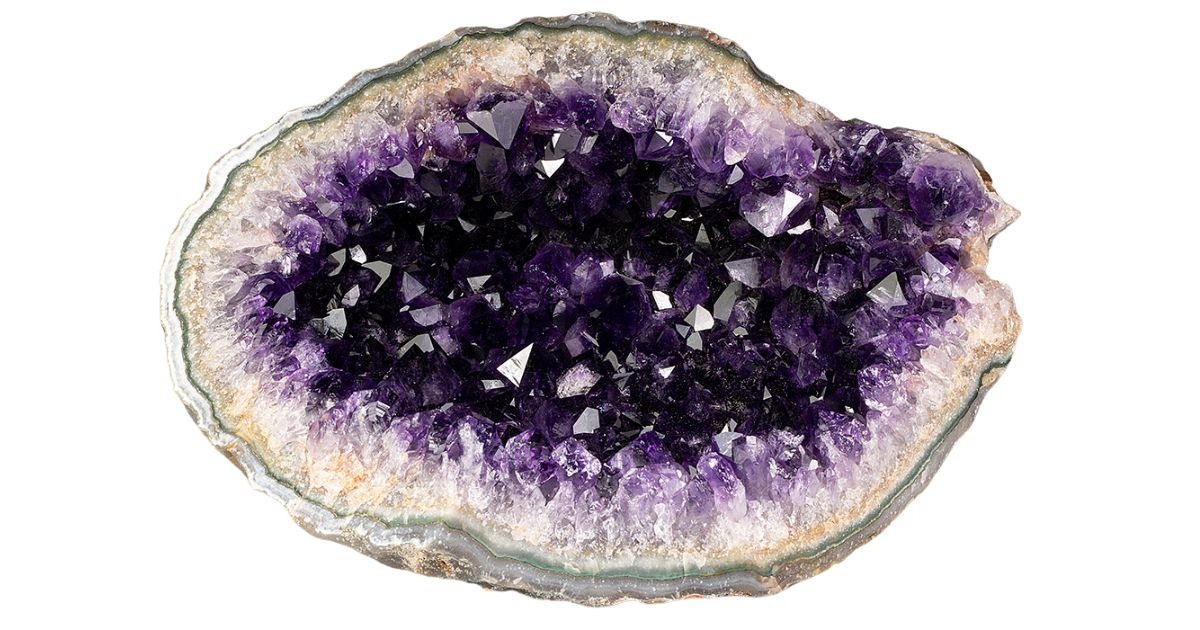Crystals don’t have to be expensive to be beautiful. Many affordable options can add color and sparkle to your collection or crafts.
Each crystal, no matter the price, has its own cool look and feel. Exploring cheaper crystals can be a fun way to discover new favorites without spending a lot of money.
Affordable Crystals that You Can Get for $50 or Less
You can find all sorts of cool pieces like polished stones, beads for making jewelry, or even raw chunks to display without breaking the bank. Here are the crystals you can start with if you want to grow your collection.
Quartz
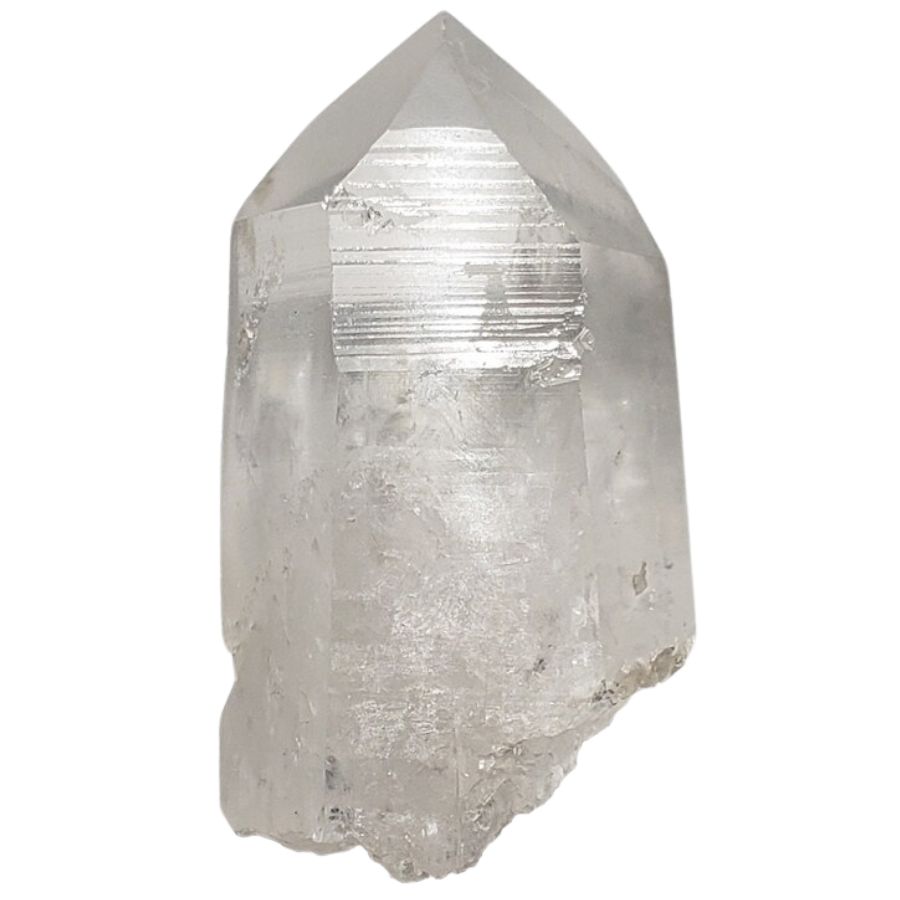
Quartz is a cool mineral that looks like it comes straight out of a treasure chest. It can be clear, pink like in rose quartz, or even smoky gray. This crystal grows in a shape that reminds you of a pencil – long and with pointy ends on both sides.
An interesting thing about quarts is that when you squeeze it, it can create a tiny electric spark. This is called piezoelectricity. This is why it’s used in a lot of gadgets like watches and radios, helping them run without any batteries.
Quartz doesn’t have to break your piggy bank; you can find cool pieces for $2 to $20. You might snag small, shiny stones that are smooth from being tumbled around. Or, you could find raw bits of quartz that have a natural point to them.
Even small groups of quartz crystals stuck together can be pretty cheap and look great on a shelf. Sometimes, you can find rose quartz or smoky quartz among these budget-friendly finds, but they might not be as bright or clear.
Amethyst
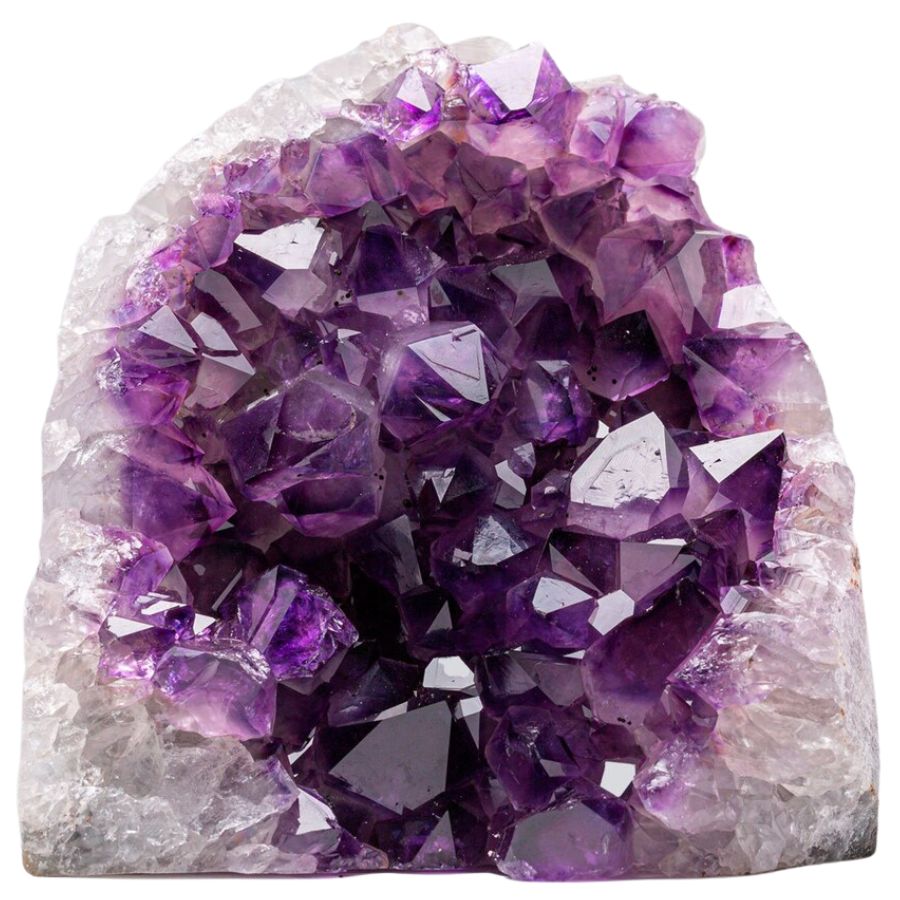
Amethyst comes in all sorts of purple, from light pinkish to a deep, royal purple. This crystal usually grows in a shape like a six-sided pencil, but sometimes it can form in clusters or even coat rocks with a layer of purple.
The awesome purple color of amethyst comes from the presence of iron. If it gets heated up naturally, it can even turn yellow and become a totally different stone called citrine.
You won’t have to spend a ton to get some amethyst for your collection; prices can range from $10 to $50. You can find shiny, smooth amethyst stones that have been polished to look great in your hand or in jewelry.
There are also small groups of amethyst crystals that look amazing together, and even some that are just naturally pointy but might not be perfectly clear or a super deep purple.
Citrine
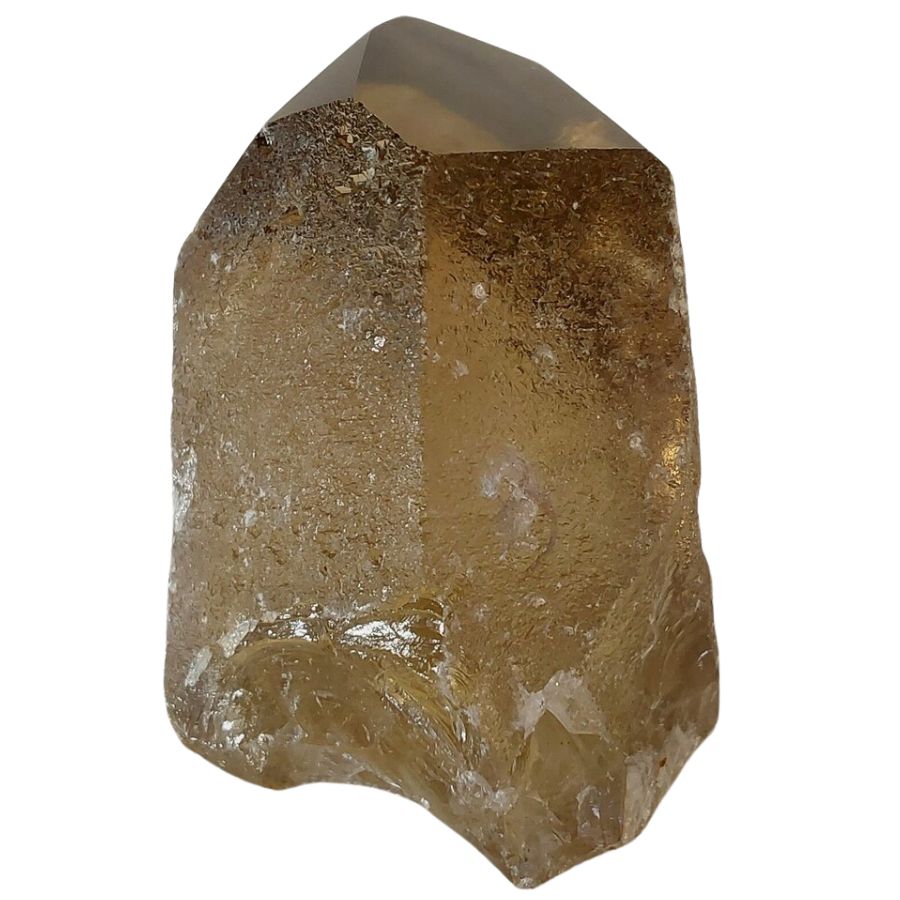
Citrine is like the sunshine in crystal form, showing off in bright shades of yellow. It usually grows in a hexagon shape with pointy ends. The colors of natural citrine can range from a light lemon yellow to a deep, rich honey color.
One surprising thing about citrine is that a lot of it starts off as purple amethyst. When amethyst gets heated up deep in the earth, it can change from purple to yellow, making it look like citrine.
Natural citrine is pretty rare, so this heat-treated amethyst helps make sure there’s enough citrine to go around.
On the cheaper side, citrine prices usually range from $10 to $50. You might come across smooth stones that have been polished, small groups of citrine clusters, or even natural citrine points that have some flaws but are still pretty cool.
Agate
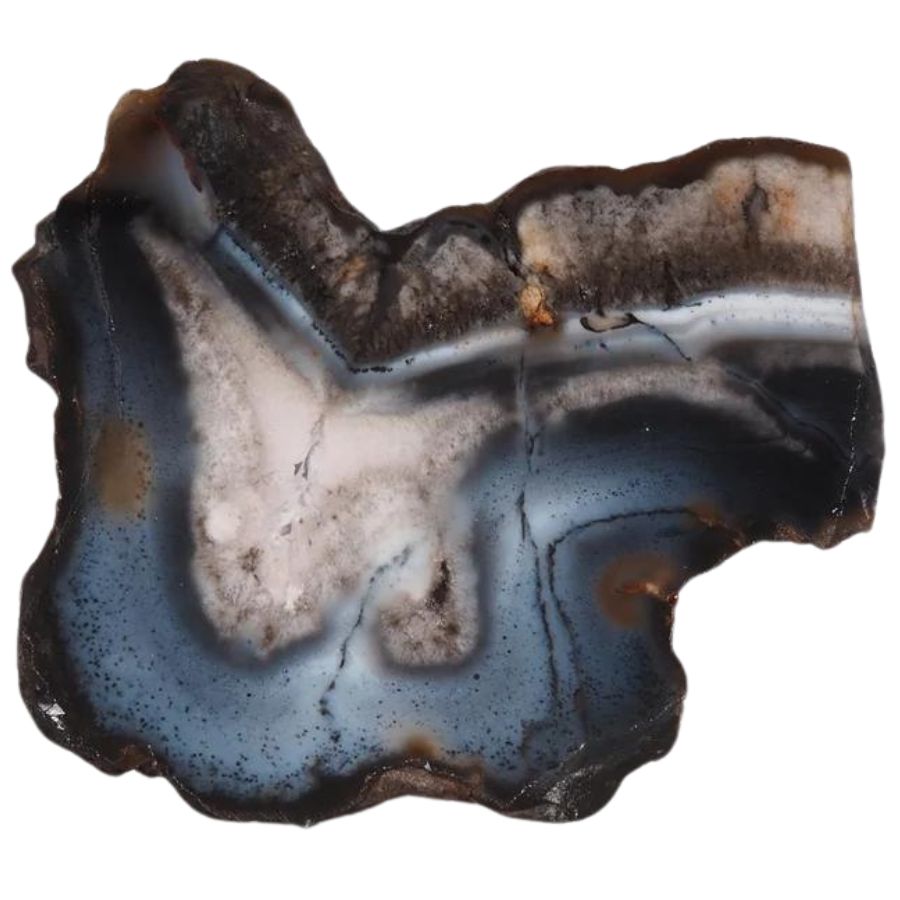
Agate is a super pretty kind of quartz. It’s famous for having these awesome stripes or bands of different colors. These bands can be just about any color, like white, red, or even blue.
One super interesting thing about agate is that it forms inside other rocks, filling up spaces with its colorful bands over time. This process makes each piece of agate display patterns that can look like swirls, waves, or even tiny trees.
If you’re thinking about getting some agate, good news: it’s not too pricey. You can usually find some nice pieces for about $10 to $30.
There are tumbled stones, which are smooth and great for carrying around or making into jewelry, and you can also find slices of agate that show off the stone’s natural patterns.
Carnelian
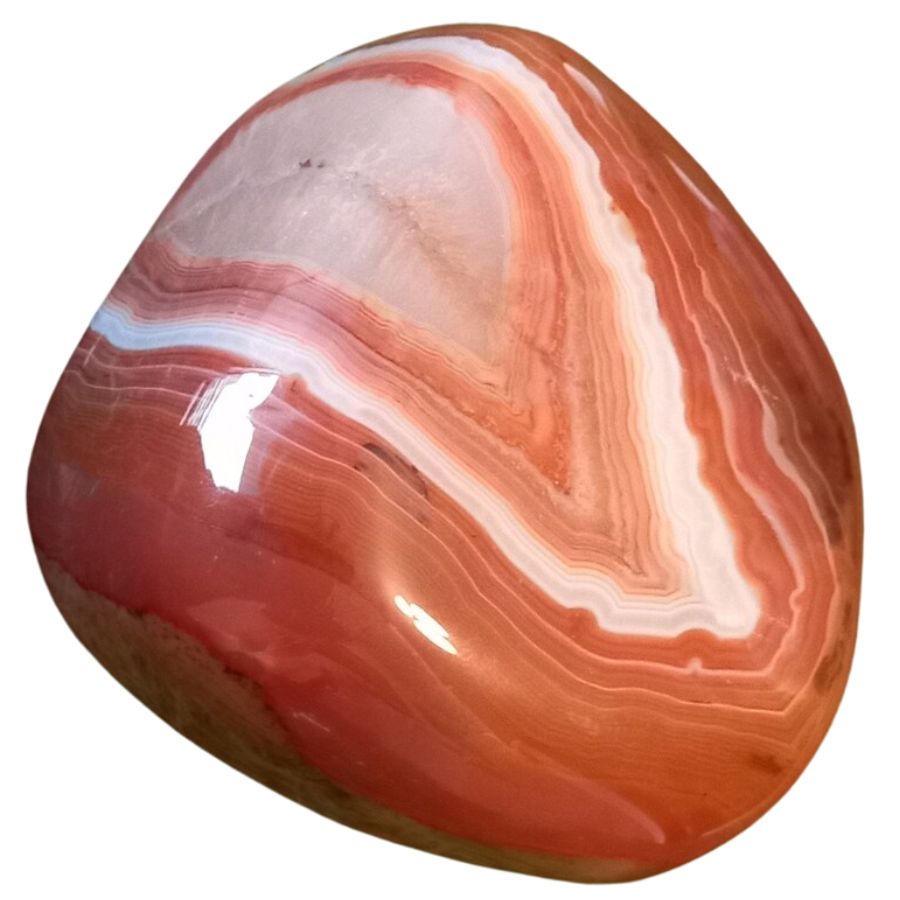
Carnelian is all about those warm colors that remind you of a cozy fire or a sunset. It doesn’t grow into crystal shapes but fills up spaces in rocks, turning them a mix of red, orange, and even brown colors.
People have loved carnelian for a really long time. It’s been a favorite for making jewelry and even important items for ceremonies across different cultures. Even some of the Egyptian pharaohs were buried with carnelian treasures.
You can find some nice carnelian pieces for around $10 to $30. There are polished stones ready for making into jewelry, slices that show off the gem’s color, rough specimens for display, and even simple carvings.
Jasper
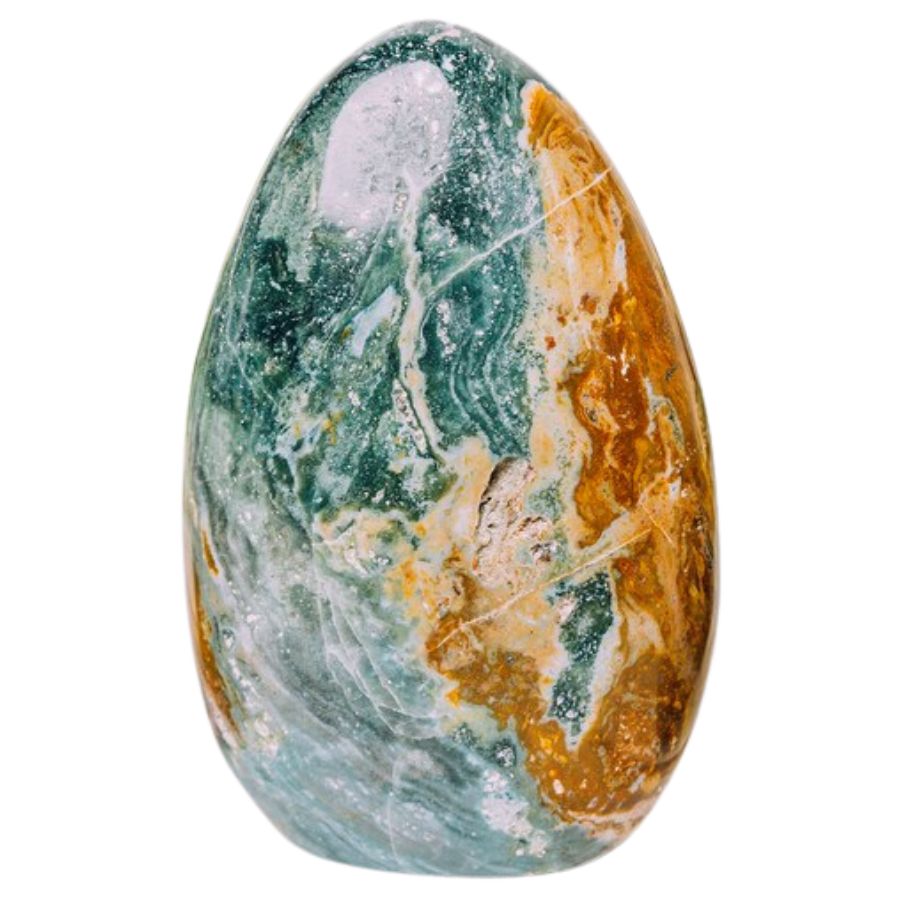
Jasper is this really cool rock that comes in all sorts of colors, from red and yellow to green and even black. Each piece can look totally different, with some being one solid color and others having stripes or spots all over them.
People have been using jasper for all kinds of stuff for thousands of years because it’s pretty tough. They’ve made things like tools and bowls out of it. Nowadays, people still like using jasper to make things like decorations or jewelry.
On the low end, the price of jasper can range from $5 to $20. You can buy tumbled jasper, slices that show off the cool patterns inside the stone, and even rough pieces. You might also come across simple carvings of jasper that are not too pricey.
Fluorite
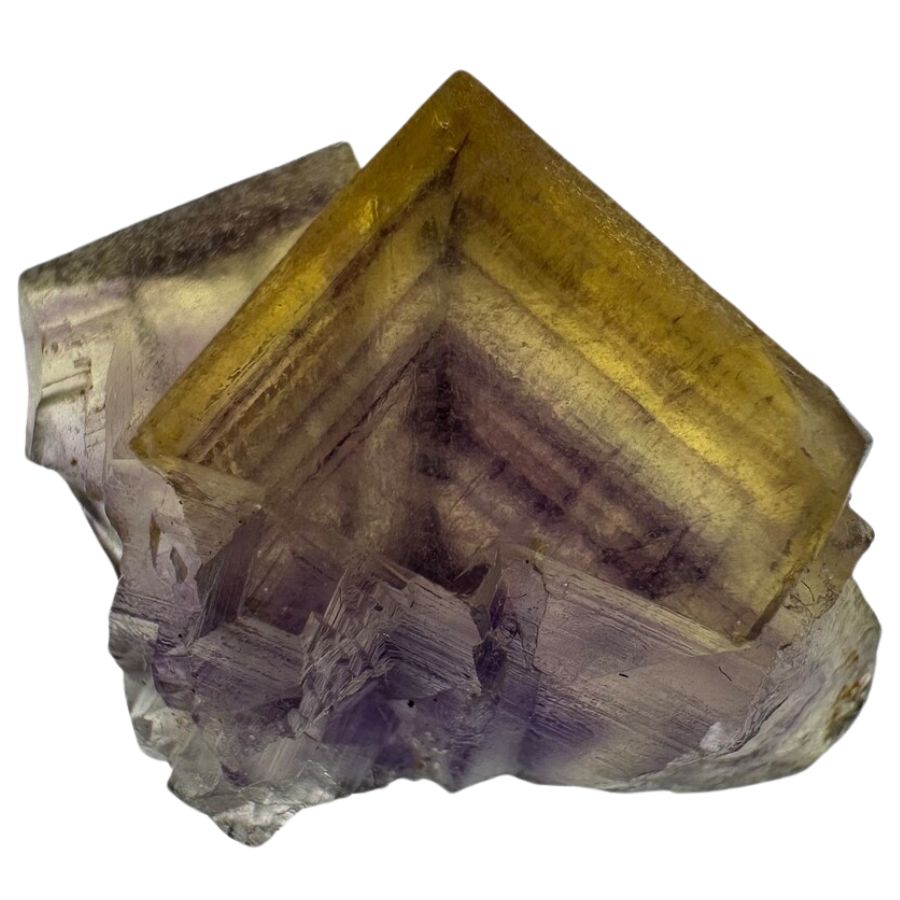
Fluorite is super cool because it comes in cubes or sometimes shapes that look like two pyramids stuck together. It can be all sorts of colors like purple, green, blue, yellow, or even clear.
One of the coolest things about fluorite is that it typically fluoresces under ultraviolet light. The crystals can glow blue, green, or purple when you shine ultraviolet light on them.
You can find pretty pieces of fluorite for $5 to $20, and there are a lot of different colors to choose from. You might be able to find singular rough crystals or small clusters, tumbled pieces, or fluorite jewelry.
Sodalite
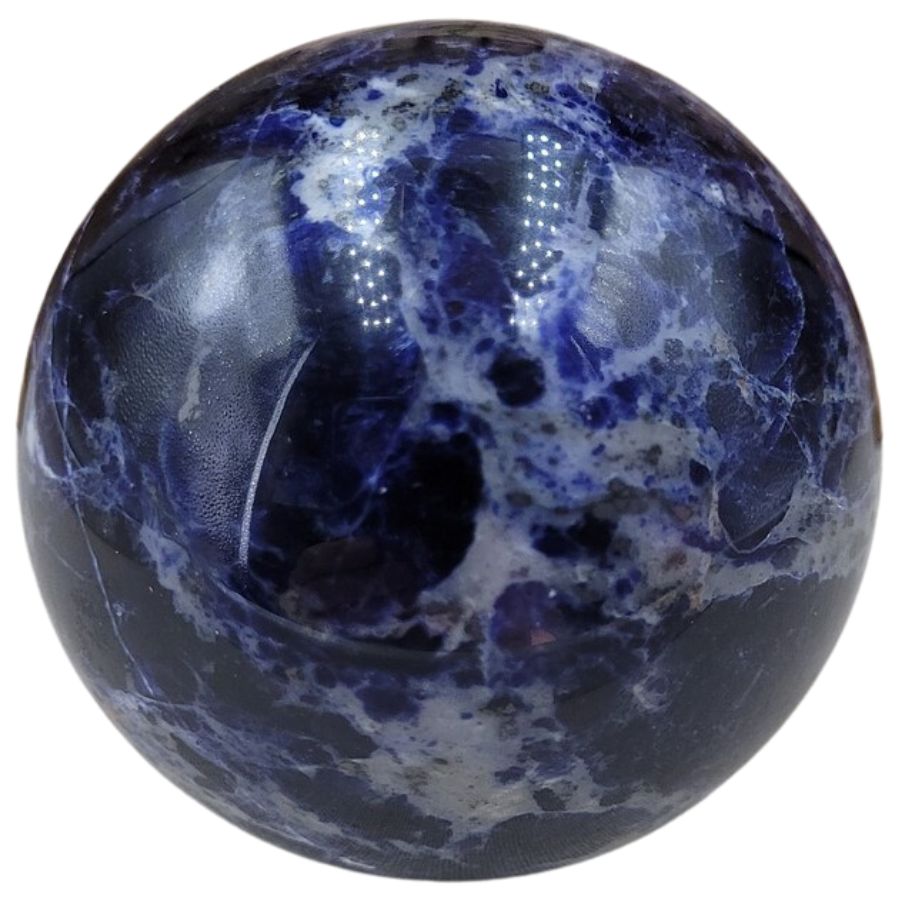
Sodalite is a really interesting stone because it usually shows up in big chunks without clearly defined shapes. The coolest thing about sodalite is its color, which can be a deep blue or even violet-blue.
Interestingly, it often gets mixed up with another blue stone called lapis lazuli. Even though they both have beautiful blue colors, lapis lazuli has shiny golden bits that you won’t find in sodalite. Sodalite, meanwhile, has white streaks instead of gold.
Nice pieces of sodalite can be bought for $10 to $30 each. There are smooth, polished stones, thin slices that show off the blue and white colors, and rough chunks that keep their natural shape.
You might even come across some simple carvings made from sodalite, all without spending a lot of money.
Calcite
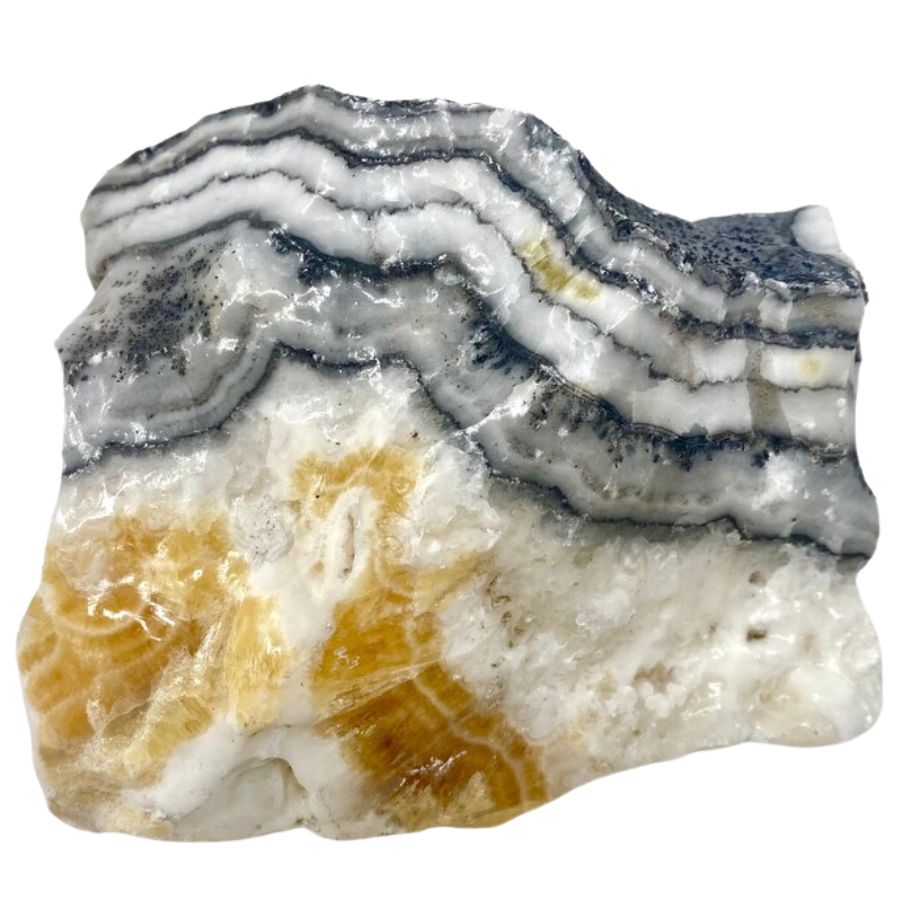
Calcite sometimes it has sharp, slanted faces, or it can look like a long tooth, and other times it’s just a big, shapeless lump. It can be pretty much any color you can think of, from clear or white to pink, yellow, green, blue, and even black.
People used to build things with calcite because there’s a lot of it and it’s easy to work with. Nowadays, it’s crushed up for use in farming, making construction materials, and even in making medicine.
If you’re thinking about collecting calcite, you can find neat pieces for $5 to $20, and there’s a bunch of different kinds to choose from.
There are smooth stones that have been polished up, slices that display banding, and rough pieces that show off the cool ways calcite can form. You might even find small bits of calcite that came from caves, like tiny stalactites or stalagmites.
Aventurine
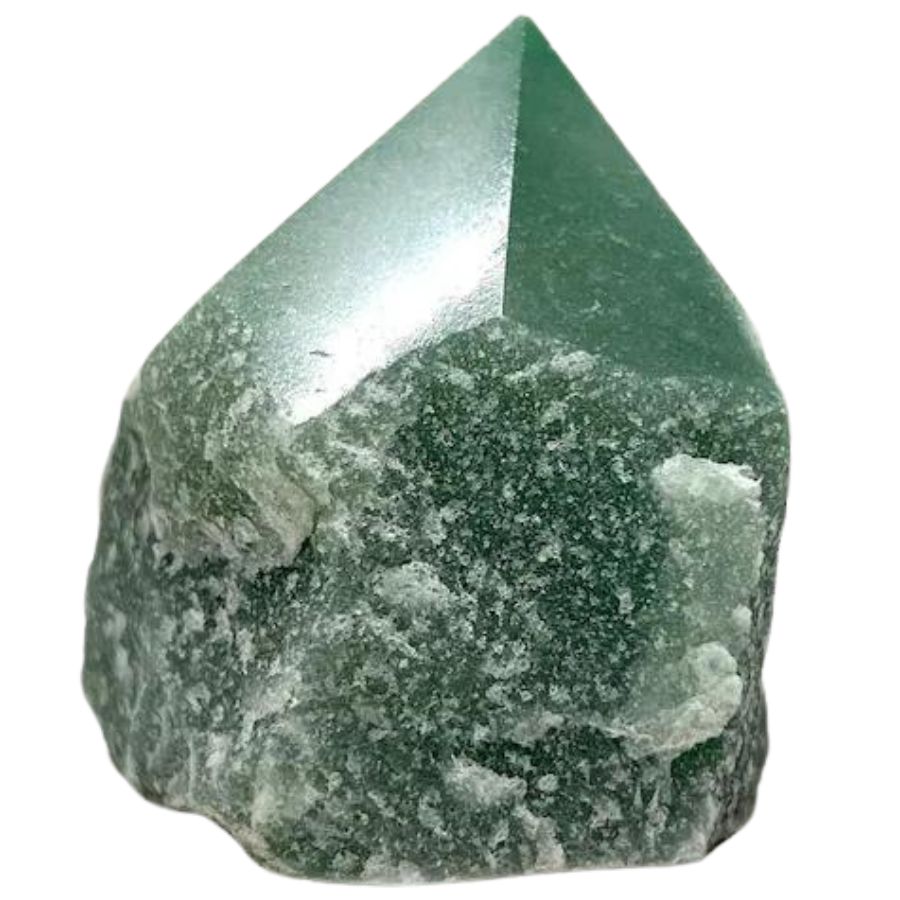
Aventurine is a type of feldspar and usually doesn’t form into specific shapes but instead grows in big groups of quartz crystals all stuck together. It’s mostly green because of the mica, but you can also find it in orange, blue, white, and gray colors.
What makes aventurine really neat is that it has tiny pieces of minerals like mica that reflect light and make the stone sparkle. This sparkle is called aventurescence, which is a defining feature of aventurine.
There are aventurine pieces that you can buy for $10 to $30. You can get polished pebbles that feel nice and smooth, beads for making jewelry, and even slices that display aventurescence. Rough specimens for display can also be quite affordable.
Hematite
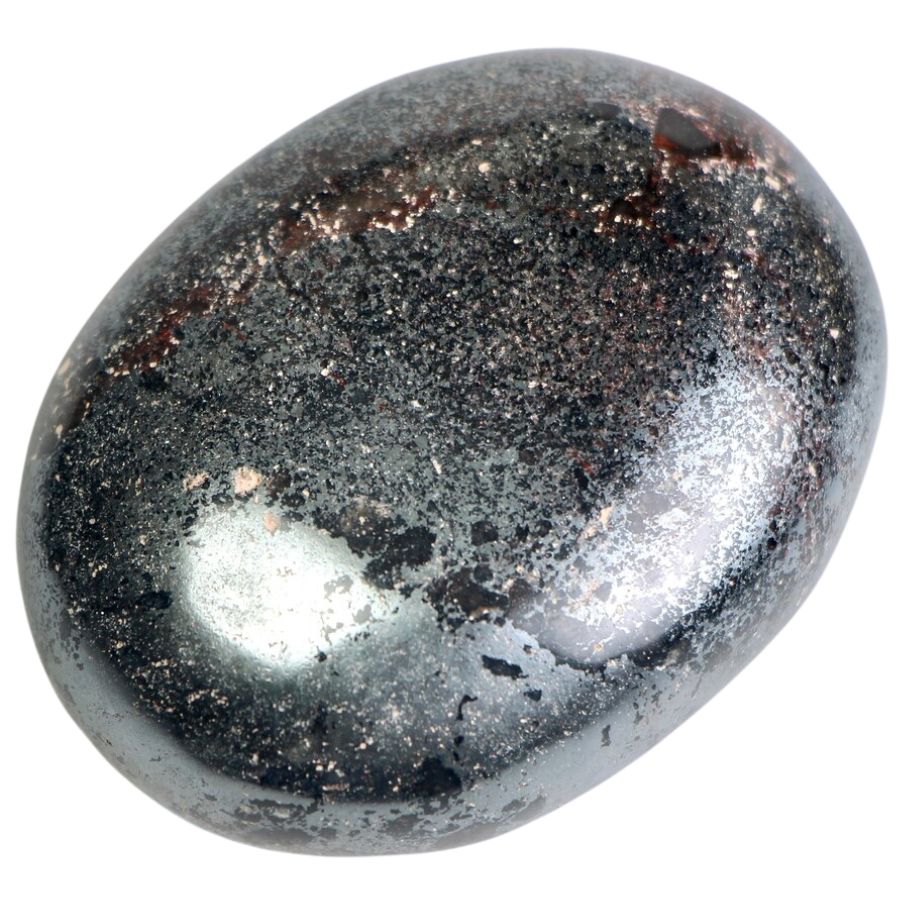
Hematite can be flat and shiny like a plate, or it can be a big chunk without any clear shape. It’s usually a steel gray or black, typically with a metallic shine.
One neat thing about hematite is that it always leaves a red or reddish-brown streak if you scratch it on something rough. This is a cool trick to help tell it apart from other rocks that might look similar.
You can find pieces of hematite for about $5 to $20. From tumbled stones that have been polished up to look really shiny to rough pieces that show off hematite’s natural cool shapes and textures, there’s a lot that you can choose from.
Pyrite
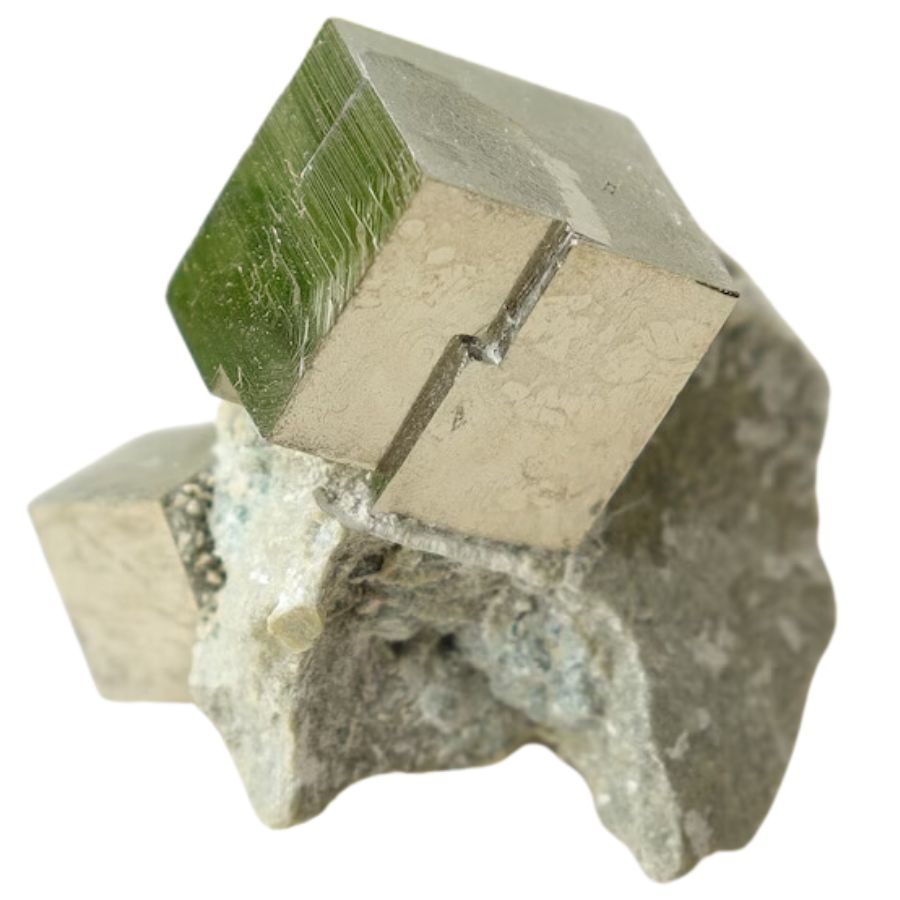
Pyrite is pretty cool because it looks a lot like gold, which is why some people call it “fool’s gold.” It often forms in shapes like cubes or pyramids, and it has this shiny, brass-yellow color that can trick you into thinking it’s the real deal.
Even though pyrite looks like gold, it’s actually a lot different when you take a closer look. It’s pretty hard, so it can scratch glass, which real gold can’t do because gold is way softer.
A fun fact about pyrite is that people used to use it to start fires because it sparks when you hit it against steel.
It’s possible to find stunning pieces of pyrite for $5 to $20, and there’s a bunch of different kinds you can get.
There are polished stones that are really smooth, raw pieces that show off the cool shapes pyrite can make, and even pyrite suns, which look like flat, shiny discs.
Garnet
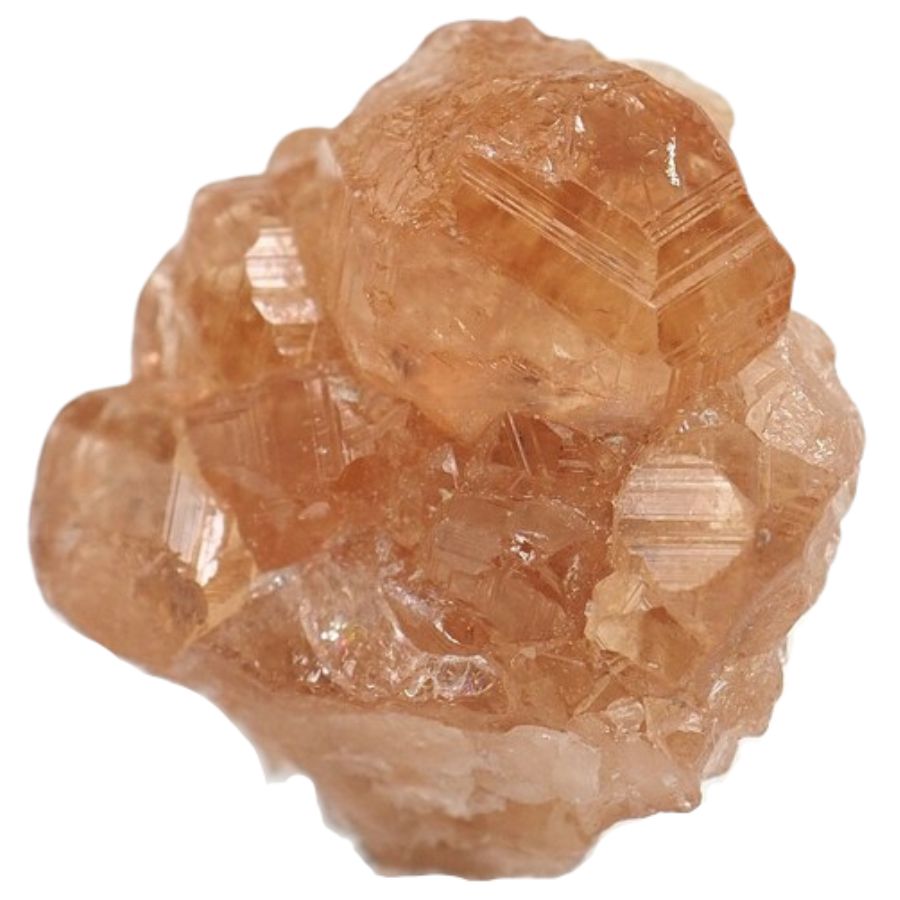
Garnet is a cool gem that comes in lots of shapes and even more colors. The most common shape is like a ball with twelve flat sides, but sometimes it can look like a bunch of trapezoids stuck together or just be a big chunk without any clear shape.
Garnet isn’t just pretty to look at; it’s also super tough, which makes it great for more than just jewelry. It’s hard enough to scratch glass, so people grind it up to help cut and polish other materials or to clean water.
Even though the best garnets can get pricey, there are lots of garnets that look great and don’t cost too much. You can find these for $10 to $50.
There are smooth garnets that have been polished up, garnet beads for making jewelry, and even garnet crystals that haven’t been polished at all and exhibit their natural shape.
Malachite
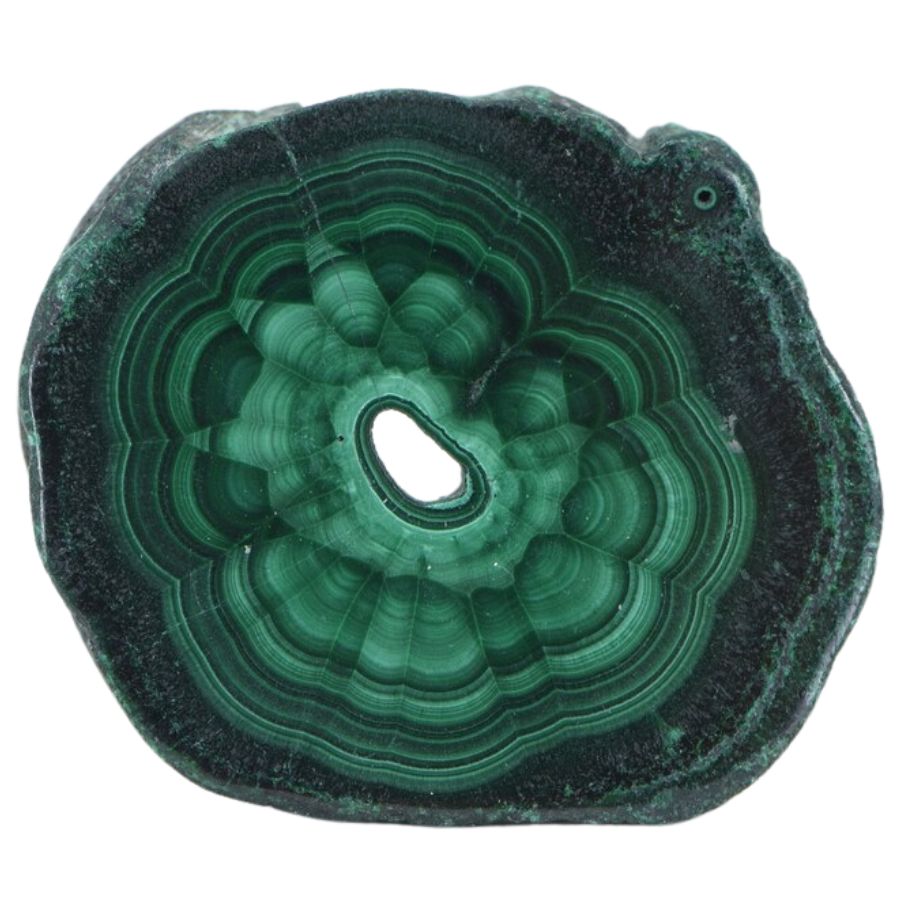
Malachite doesn’t usually form into shapes like most crystals do. Instead, it grows in big blobs or in shapes that kind of look like grapes. It has all these different shades of green mixed together, sometimes in stripes or circles that make each piece unique.
A long time ago, people in Egypt used malachite for makeup and even as a colorful paint. They found out that if you accidentally dropped malachite powder into a fire, it could turn into tiny copper beads. That’s because malachite has copper in it.
It’s easy to find malachite pieces for $10 to $30. There are polished stones that feel really smooth, slices that show off the cool banded patterns, and even beads for making jewelry.
You can also find raw pieces that haven’t been polished but still show off malachite’s awesome green colors and interesting natural shapes.
Rhodonite
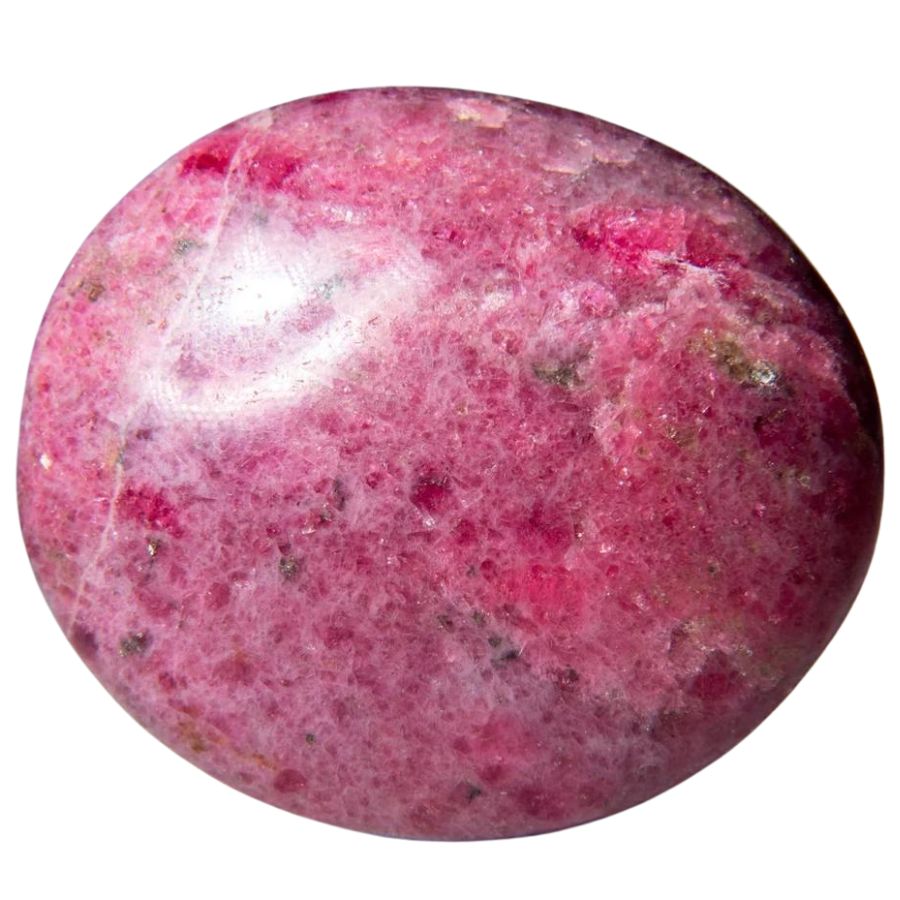
Rhodonite is usually found in big, shapeless pieces that can split along smooth surfaces. Its color can be anything from a gentle rose pink to a bold cherry red, and it often has these black lines running through it.
Even though rhodonite is mostly known for being pink or red, it can actually come in other colors too.
There’s a kind called bustamite that looks more grayish-brown because it has calcium in it, and another type called fowlerite that gets a different color from having zinc.
You can but a variety of stunning rhodonite pieces for $10 to $30. There are smooth stones that have been polished up, beads for making jewelry, and even rough chunks that show off the natural pink and red colors and patterns.
Moonstone
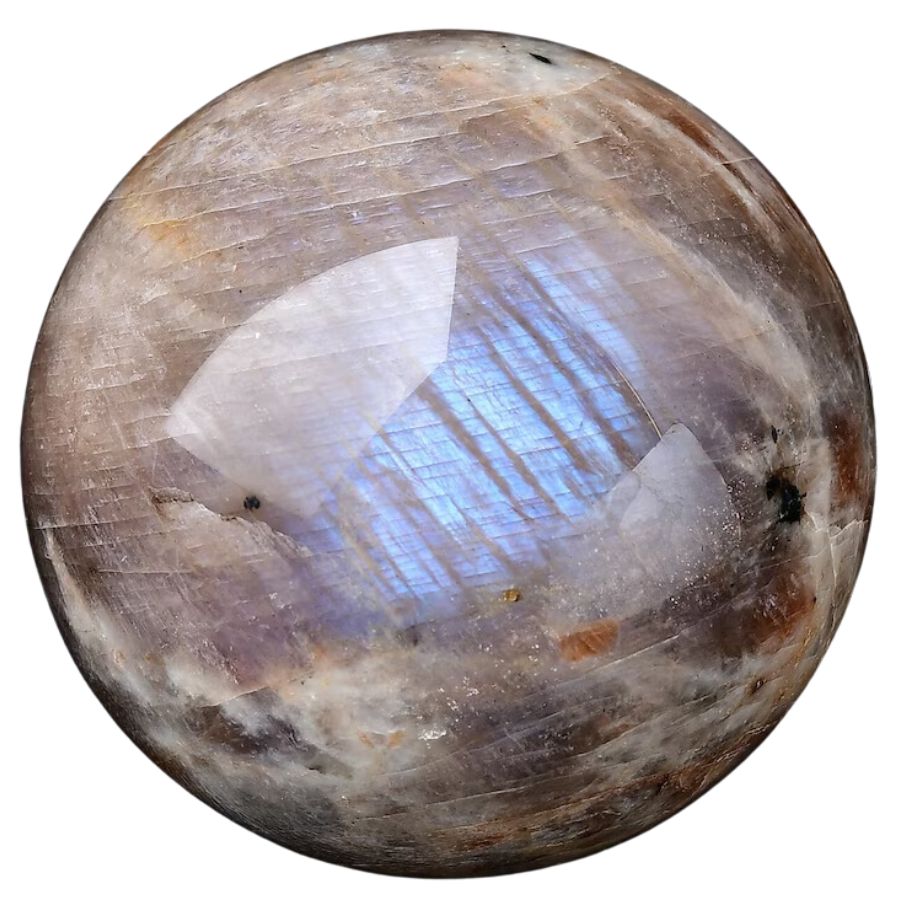
Moonstone is best known for its adularescence. When you move the stone around, you might see a shimmering bluish or white light that looks like it’s floating inside the stone.
The stone itself can be clear, white, gray, peach, pink, or brown, but it’s the light play that makes it really special.
When light hits the stone, it bounces around inside because of the way the stone is built. This scattering of light is what gives moonstone that awesome glow that seems to shift and change as you look at it from different angles.
There are pieces of moonstone that are sold for $10 to $50. There are polished stones, beads, cabochons, and even rough crystals that haven’t been cut or polished.
Sunstone
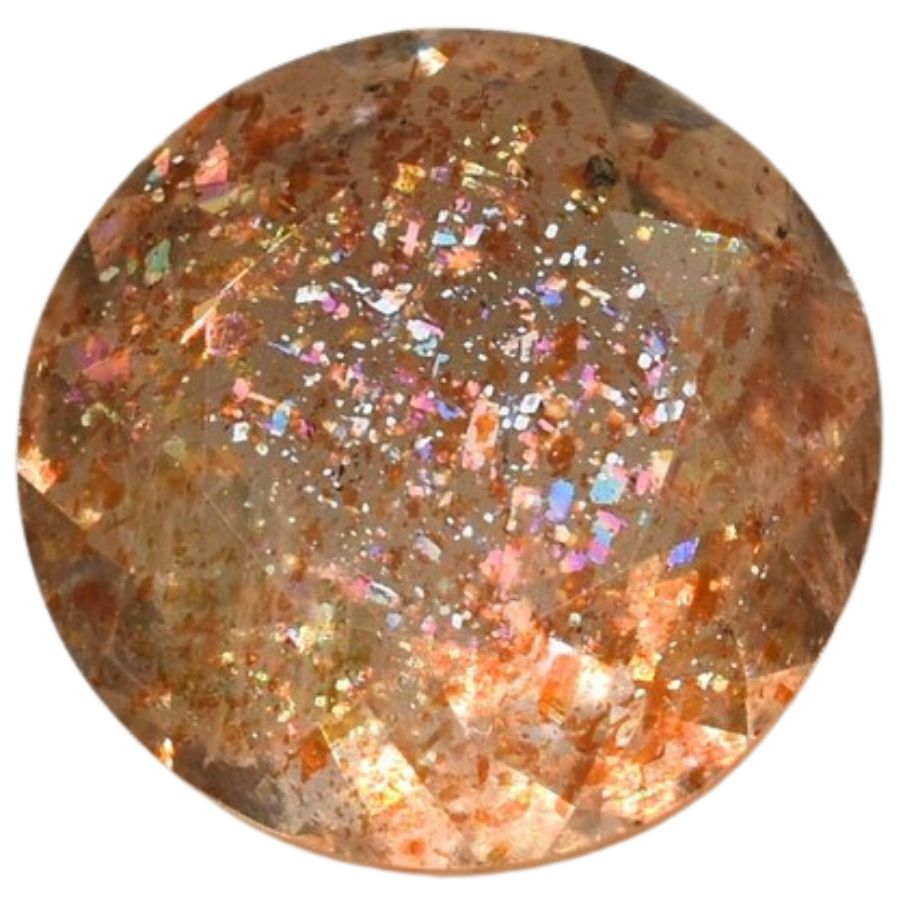
The coolest part about sunstone is this sparkly effect inside it, called aventurescence. It looks like tiny golden or reddish-brown sparkles are trapped inside the stone, making it shine in a really neat way.
The sparkly bits in sunstone are actually tiny bits of minerals like hematite. When light hits these bits, they reflect it back, which makes the stone look like it’s glittering from within.
This is what gives sunstone its name because it kind of looks like the sun shining inside the stone.
You can find great sunstone pieces for $20 to $50, and there’s a lot to choose from. There are tumbled stones, cabochons, beads for making jewelry, and even raw pieces that show off the stone’s natural colors.

